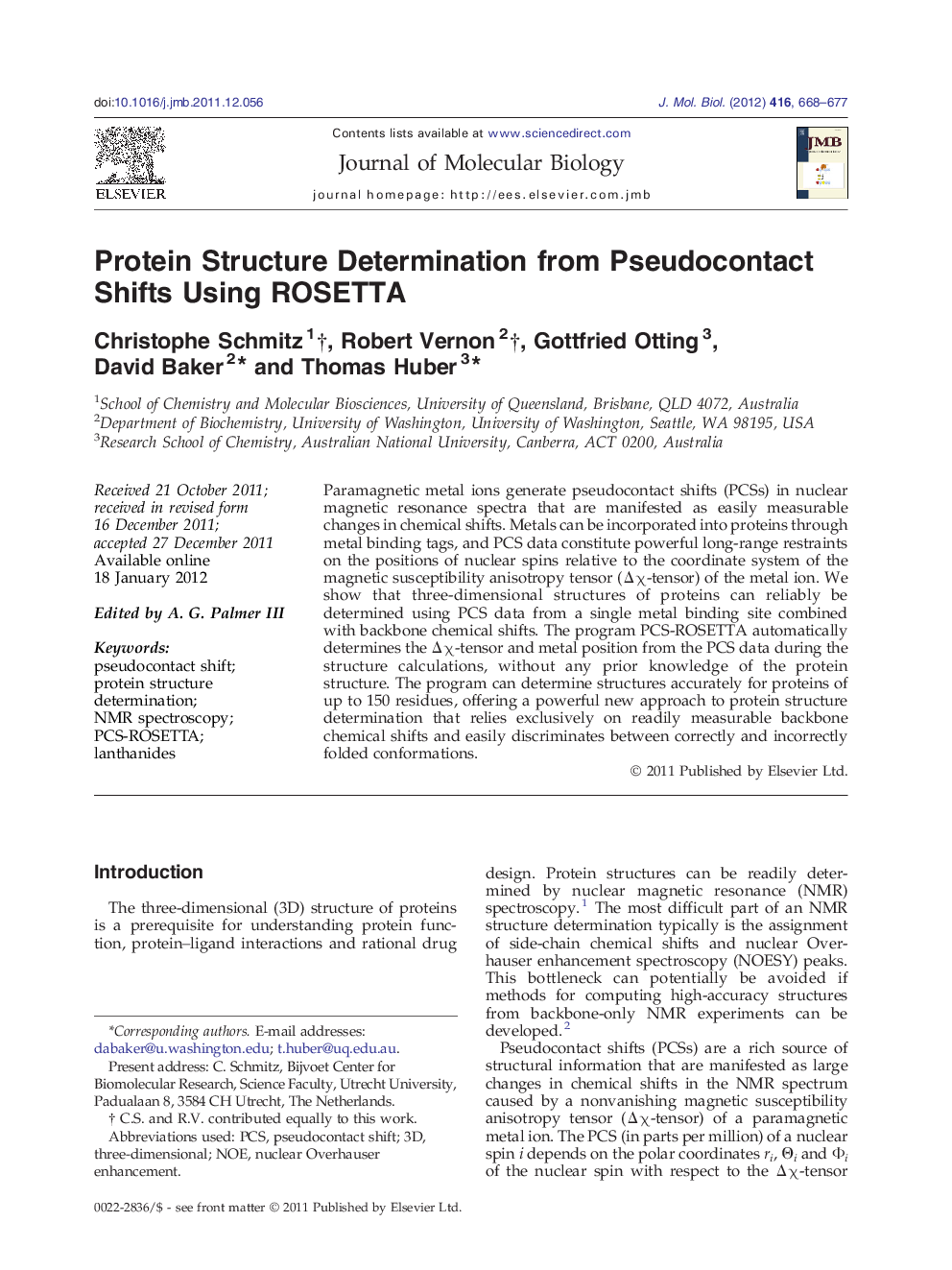| Article ID | Journal | Published Year | Pages | File Type |
|---|---|---|---|---|
| 2184701 | Journal of Molecular Biology | 2012 | 10 Pages |
Paramagnetic metal ions generate pseudocontact shifts (PCSs) in nuclear magnetic resonance spectra that are manifested as easily measurable changes in chemical shifts. Metals can be incorporated into proteins through metal binding tags, and PCS data constitute powerful long-range restraints on the positions of nuclear spins relative to the coordinate system of the magnetic susceptibility anisotropy tensor (Δχ-tensor) of the metal ion. We show that three-dimensional structures of proteins can reliably be determined using PCS data from a single metal binding site combined with backbone chemical shifts. The program PCS-ROSETTA automatically determines the Δχ-tensor and metal position from the PCS data during the structure calculations, without any prior knowledge of the protein structure. The program can determine structures accurately for proteins of up to 150 residues, offering a powerful new approach to protein structure determination that relies exclusively on readily measurable backbone chemical shifts and easily discriminates between correctly and incorrectly folded conformations.
Graphical AbstractFigure optionsDownload full-size imageDownload high-quality image (73 K)Download as PowerPoint slideHighlights► PCS-ROSETTA offers a powerful new approach to protein structure determination. ► Three-dimensional structures of proteins up to 150 residues can reliably be determined using backbone PCS data only. ► PCS-ROSETTA automatically determines protein structure, the Δχ-tensor and metal position from the PCS data.
